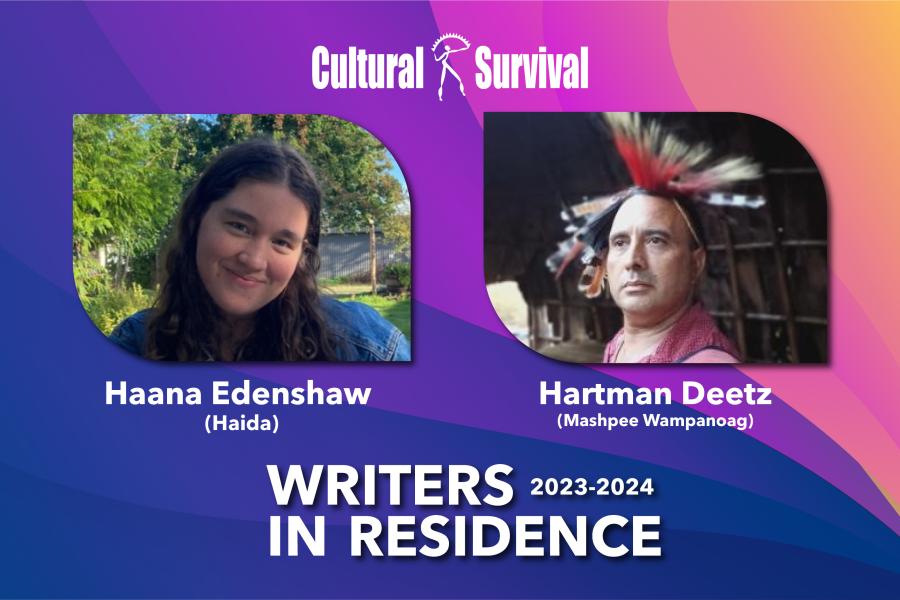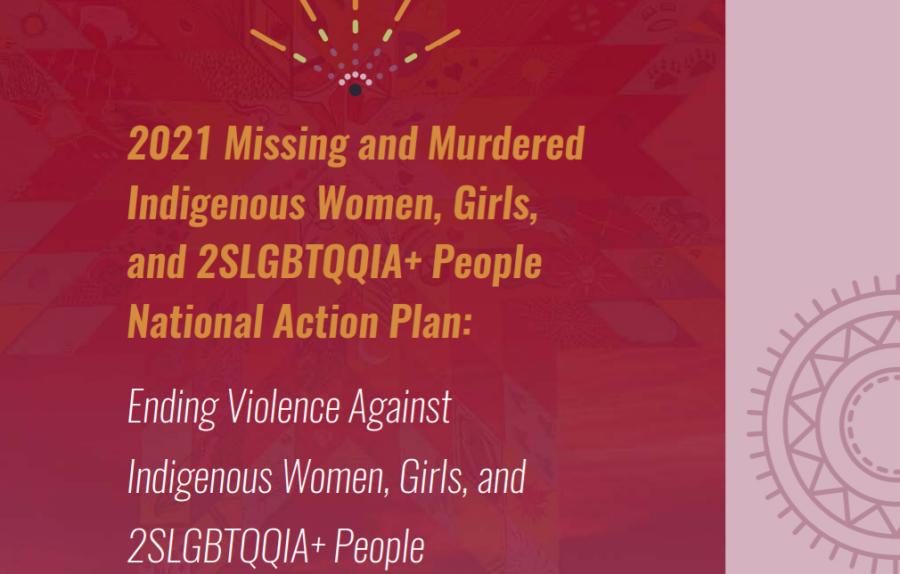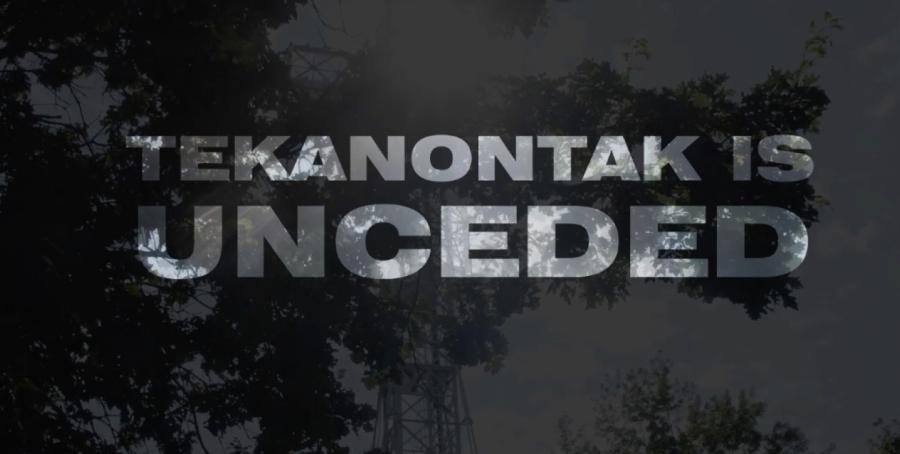By Febna Caven
“In a gentle way you can shake the world”--Mahatma Gandhi
On December 11, 2012, northern Ontario Attawapiskat Chief Theresa Spence began a hunger strike, calling the Prime Minister of Canada Stephen Harper and the Governor General David Johnston to “initiate immediate discussions and the development of action plans to address treaty issues with First Nations across Canada.” Her peaceful resistance emphasizing the pertinence of dialogue catapulted the #IdleNoMore (INM) movement to a new level of urgency. The movement that began as a resistance against the impending Bill C-45 in Saskatchewan, Canada soon spilled over the boundaries to United States and spread as far as Ukraine and New Zealand as a movement that empowers Indigenous communities to stand up for their lands, rights, cultures, and sovereignty. With vision of a people united for nature, a focus on dialogue and a strong feminine leadership, the movement is a potent counter narrative to the metanarrative of hyper-masculinity of our times.
Ours is a world of hierarchized dualisms. Where spaces for man-woman, culture-nature, the mainstream and the subaltern are all marked out and dominance is ascribed to one over other. Seen as structures that range from patriarchy to capitalism; as “isms” that range from Fordism to ageism; as exhortation for reason, competition and efficiency, the masculine paradigm reigns predominant in our society today. It weaves an interdependent web of oppression involving class, gender, race and nature. A dissent to that web of oppression, to be effective, should also be an interdependent web that weaves strands of values, histories and communities together. The Idle No More Movement, which today is spreading across the world, is a potent example of the feminine appropriating its rightful place. Not only because of the fact that it was a group of women who birthed the movement. But also because of how the movement has evolved and what values have been upheld throughout its course.
The Idle No More movement began as a string of emails as four women from Saskatchewan- Jessica Gorden, Sylvia Mc Adam, Nina Wilson and Sheelah McLean got together and decided to make a ‘sincere effort to make some change.’ The context for their resolution was the Canadian Bill C-45; the government’s omnibus budget implementation bill that includes changes to land management on the reservations. It attacks the land base reserved for Indigenous people and removes protection for hundreds of waterways and weakens Canada’s environmental laws all in one volley. The ladies started a Facebook page to brainstorm ideas and plan for action. And Jessica Gordon, who is from Pasqua 4 Territory decided to name the page, “Idle No More” as a reminder to themselves, ‘to get themselves off the couch and start working.’
From the beginning the movement had a focus on the grassroots, which was evident from the first major event, a mass teach-in at Station 20 West in Saskatoon, Saskatchewan on November 10th 2012. Following the mass-teach in, loosely coordinated by the Facebook page and the #idlenomore hash tag in Twitter, a series of rallies, protests spread across Saskatchewan and on to Winnipeg, Manitoba, Edmonton, Alberta. Speaking to a reporter on one such rally, Nina Wilson, Nakota and Plains Cree from treaty 4 White Bear territory spoke “We are hoping to get more and more people inspired and motivated to speak and be not afraid to learn. The bill itself is complicated, bulky… We are trying to help people to get their voices back… so that we can make more change… And we are able to have more of a first nations voice… not just a first nations but an indigenous voice, and not just an indigenous voice but a grassroots voice, because it affects us all.”
And it does affect us all…. Though it was the OMNIBUS c-25 bill that started the movement, INM is not just about legislations. It is also a call for renewal of the indigenous identity and way of living. And though it directly addresses the indigenous issues, there is none among us for whom the message of uniting for our nature, communities and peaceful coexistence is not relevant. The movement’s stress on resisting the political inequality, exploitation of nature and decimation of democracy make the movement resonate with the alienation that many of us feel, around the globe. The strong sense of ‘the personal and the spiritual’ that the movement invokes is a warm invitation for communities fed up with consumerist frenzy and mass anomie. Organizing flash mobs, round dances and rallies, the movement target huge malls- the sites of consumerist and imperialist frenzy. However no matter, how many the crowd numbers, or how motivated they are in their activism, the principle of peace has been strictly adhered to. As Jessica Gordon notes, “We’ve had pipes raised, prayers done, ceremonies and so on to ensure that we keep it peaceful and that’s what we will respect.”
The leaders and spokespersons of the movement have no reluctance in linking the political to the very personal experiences. The personal is very much a part of the movement. From her teepee in the frozen Ottawa River, a stone’s throw away from the Parliament Hill, where she observes her hunger strike Teresa Spence notes, “I am in this resistance because the pain became too heavy. I just could not take it any more.”She explains how the alienation and pain she feels stems from her years in the resident school. The change in life was drastic and made her who she is today. “The pain. The pain is still there. It doesn’t want to go away. I had to choose to live with it. It was a closed chapter- until one day you realize this generation is facing the same pain we felt at resident school. We want a life of freedom and not a life of pain and fear for the generation.... I am doing this for the children- to walk together- to love each other to walk together.”
Building a future of unity, in harmony with nature are recurring themes in the movement’s narrative. A sense of responsible motherhood is palpable as Jessica Gordon calls out to supporters: “This we do for our Children, Grand Children and Children, not yet born. We call ourselves, warriors, are we willing to give up our lives for Mother Earth and Future Generations. I do this with a heavy heart and have broken down and cried and apologized for not haven't done enough for Mother Earth and the Children not born.” This is one of the things that make the movement such a powerful grassroots movement among the supporters, especially the indigenous communities in Canada. Because their leaders speak boldly and yet tearfully about the pain they felt. They remind them of their shared stories and memories and urge them to stick to their loyalties. They speak in ways their people can understand them. Indeed the Idle No More Movement is a very personal, radical and spiritual movement.
As Sheelah McLean, who is a third generation settler from western Europe and is the only non-aborigine member in the initial group of four leaders notes, “it is a very loving movement … and it’s almost entirely female led. Women organize most of the events in the movement. Even though there are hundreds of men who support the movement, the vast majority of the movement’s participants and organizers are women.” Sheelah’s presence made the initial leader group a blend of women, and her passion for the cause from the very beginning was a statement that the resistance to the bill C-45 was a resistance relevant to every Canadian. Indeed, the nature of the fluid, nonviolent and unifying movement is one that reflects as well as engages women’s agency robustly.
As the movement grows in size, loosely coordinated with the use of the #idlenomore hashtag, Facebook page and the blog, there is increasing chance of the movement going out of control. Nonviolence, inclusion and peace have been strong values that guided the movement from the beginning. When a movement becomes strong and its masses swell, it is hard to maintain that discipline. From one of the earliest examples of a nonviolent movement, the Non-Cooperation movement In India to the recent Occupy movement, we have seen how a mass movement can turn violent as passions gets inflamed. But the women, in their leadership role have ensured that this does not happen. By reiterating the spirit of the movement, each of them guards the genuineness of the movement. Jessica Gordon who has tremendous experience working for her community within non-profit community based organizations and volunteering on committees and boards has taken up the responsibility for monitoring the virtual space of the movement. In a movement, where the tweets in twitter and the posts in Facebook are the steering forces, Jessica Gordon has shown amazing foresight and diligence in crafting the face and pace of the movement. She manages the website for the movement http://idlenomore1.blogspot.ca/ and takes great care in ensuring that the events that get promoted and added to the Idle No More banner are all peaceful, casual- not causing any trouble to the population. “If I’m posting, I’ve been able to look at that and make sure that they are all peaceful. That’s what we’ve been saying from the beginning,” she says.
Sylvia McAdam who is from the Treaty 6 territory and is a direct descendent of the treaty makers is a scholar on Cree culture as well as in law and human justice. She authored a book in 2009, Cultural Teachings: First Nations Protocol and Methodologies. Her strong connection to her heritage helps makes her a bridge between the present pertinent issues to the tribe’s culture. Nonviolence is a movement of great spiritual strength and for a mass who finds itself distracted and tired easily, they need to have precepts and reminders as to how to renew and conduct themselves. Sylvia invokes the Cree history and laws to discipline and unites and brings to action the Indigenous people,
As we go into this “resistance”, we can no longer be silent - its not an option….. We must not be silent with what is happening, it is not a far-fetched statement when we say we are under attack and so are the lands, resources and our children. I’ve heard many of my relatives say “yes, I will be there” but they don’t attend the rally/event/gathering/ceremony etc. Perhaps the reasons are legitimate, however in our nehiyaw weyeswewna (Cree laws), when we say we going to do something, the spirit world listens, your keepers listen and our ancestors listen. When we say we are going to go “support”, we mean “e we ni towh setohks ka ke yak”.. This term means we are doing more than supporting, our keepers, spirits etc are going too, so the ones that are listening will begin to “pave” the journey there for you so you may arrive safe and unharmed. When we don’t follow through with our plans, than our keepers will have set the path for that journey for nothing. When a person does this far too many times, than you are “e pah kachimayak”, which means, “to purposely mislead, dishonest, unsupportive.”
Each woman who leads the movement indeed has a niche she fills. Even as the movement has the strong leadership provided by their blend, the masses at the grassroots still retain their place at the core of the movement. As Nina Wilson, reiterates, it is the grassroots people the movement addresses and seeks strength from. In its totality the movement proves that power is not a zero sum equation and that one’s power only empowers another. The movement’s focus on dialogue could is also of the same substance. Even as the movement leaders speak of disenfranchised communities left without even potable drinking water and even as the extended history of colonialism and violation of treaty rights are all recalled, the focus still remains on dialogue so that solutions are sought together and not imposed.
So that the space and chance for co-creation is securely protected. This focus on co-creation and dialogue along with the message of peace and unity has tremendous redemptive value. Speaking up, dancing and rallying together, co-creating, lets too join. Let Us Be Idle No More.
--Febna Caven is an independent researcher and writer on communities in contested environments.



